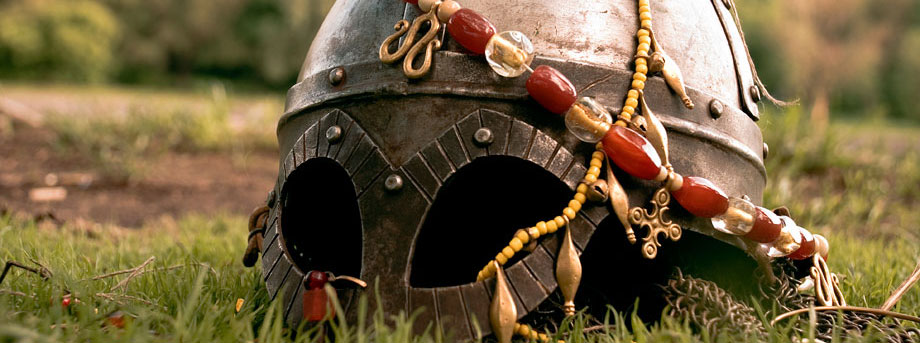Cracking the Norse code
March 8th, 2011
The Vikings are alive and well and living in the North West of England! That’s the revelation in a new book on an epic research project into the genetic footprint of the Scandinavian invaders.
Viking DNA: The Wirral and West Lancashire Project is the culmination of several years of research by Wirral-raised Professor Steve Harding from The University of Nottingham, Professor Mark Jobling and Dr Turi King from the University of Leicester, and many other collaborators. It showcases the power of modern DNA methods for probing ancestry using the North West of England as an example.
The North West has long been known to have special links with the Vikings going back over a thousand years. Evidence for this has been archaeological, in ancient manuscripts, local surnames and placenames such as Thingwall, from the Old Norse ‘ping-vollr’ meaning ‘meeting place’. It’s believed many Vikings, of mainly Norwegian origin, ended up in the region after being expelled from Ireland in AD902.
The book tells the story of how 21st-century genetic methods have been used in conjunction with historical and linguistic evidence to investigate the Viking ancestry of Wirral and neighbouring West Lancashire. Rigorous DNA analysis of samples of the local population has scientifically proved that the Vikings settled heavily in the area and left a huge genetic legacy which survives and continues today.
The researchers’ new ‘Norse saga’ unfolded as they carried out cheek swab DNA tests on around 100 men from the area who had local surnames dating back hundreds of years. Some names were sourced from a tax register from the time of King Henry VIII, others from lists of alehouse and criminal records, and a list of people who contributed to the stipend of a priest. Only men were swabbed as they carry the Y-chromosome, the DNA on which, like their surname, is passed down the paternal line from father to son with little or no change.
The results found that up to 50 per cent of the DNA from the men of both Old Wirral and Old West Lancashire ancestry was Viking in origin. The full scientific study appeared in the leading journal Molecular Biology and Evolution but has now been put into context for a wider audience in this new book, which pulls together all the evidence, both scientific and historical.
Prof Harding said: “The results forming the basis of this book were very exciting because they tie in with the other evidence from the area. We have tried to explain the background and the DNA method in a way that everyone can understand, and it should be of interest to anyone who is curious about the Vikings and ancestry.
“It also provides a great example of community involvement in science. One youngster from Irby on the Wirral was so impressed with the results for her father that she wrote a school project, My Viking Dad and his Viking Dog.”
Famous TV historian Michael Wood pays tribute to the book in his Foreword: “As the best history always should, the tale involves identity, local feeling, the life lived; it suggests how in a mysterious way even the deep past still lives on in us. It also shows how gripping and informative local history can be, but how it also can vividly illuminate the big picture. It is a model applicable to every community in the UK; a perfect example of what one hopes will become the new history. Not one delivered from on high but developed at grass roots in conjunction with the people themselves, using their archaeology, history and landscape, their family histories, documents, memories and even their DNA.”
The Wirral and West Lancashire Viking DNA survey has now been extended to North Lancashire, Cumbria and over the Pennines to North Yorkshire to see how far the Norse settlers from the Irish Sea penetrated into medieval northern England. The researchers are also collaborating with experts in Scandinavia focusing again on people who can show that their ancestry goes back many generations in particular parts of Scandinavia. In this way they will be able to get a much better idea of what the genetic profile of Scandinavia was like in the Viking age.
Viking DNA: The Wirral and West Lancashire Project (ISBN 978-1907284946) is published by Nottingham University Press in association with Countyvise and is available from Amazon and all good booksellers.
More details on the full Wirral genetic survey and the book are available at www.nottingham.ac.uk/-sczsteve.
Tags: DNA, Dr Turi King, Molecular Biology and Evolution, Professor Mark Jobling, Professor Steve Harding, University of Leicester, Viking DNA: The Wirral and West Lancashire Project
Comments are closed.
Other News

Need news? See you on SharePoint
After 14 years of service, Campus News is being retired as the university’s staff news platform. […]

Roads and car parks closed for refurbishing work
As part of ongoing road improvements at the university, works will be taking place to resurface […]


